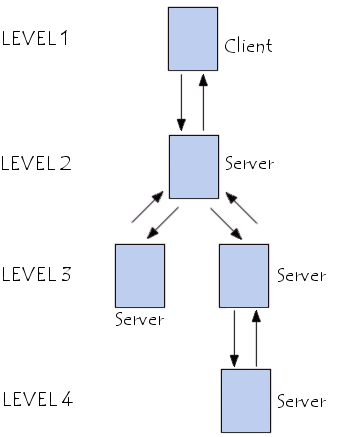What is 3-tier client/server architecture: example, diagram

In client/server systems, there are several types of configurations. This article will get into detail of the client server architecture and more precisely, 2-tier architecture and 3-tier architecture. We also explain the differences and the similarities of the two systems.
What is 2-tier architecture?
2-tier architecture describes client/server systems in which the client requests resources and the server responds directly to the request, using its own resources. This means that the server does not call on another application in order to provide part of the service:

What is 3-tier architecture?
In 3-tier architecture, there is an intermediary level, meaning that the architecture is generally split up between:
- A client (the computer): requests the resources, equipped with a user interface (usually a web browser) for presentation purposes.
- The application server (also called middleware): its task is to provide the requested resources but by calling on another server.
- The data server: ir provides the application server with the data that it requires:

 |
The widespread use of the term 3-tier architecture also denotes the following architectures:
|
What is the difference between 2-tier and 3-tier client server architecture?
2-tier architecture is a client-server architecture where the server is versatile, meaning it can directly respond to all of the client's resource requests. In 3-tier architecture, however, the server-level applications are remote from one another, meaning each server is specialized with a certain task (for example: web server/database server).
3-tier architecture provides:
- A greater degree of flexibility.
- Increased security, as security can be defined for each service, and at each level.
- Increased performance, as tasks are shared between servers.
Multi-Tiered Architecture
In 3-tier architecture, each server (tier 2 and 3) performs a specialized task or service. A server can, therefore, use services from other servers in order to provide its own service. As a result, 3-tier architecture is potentially an n-tiered architecture:


